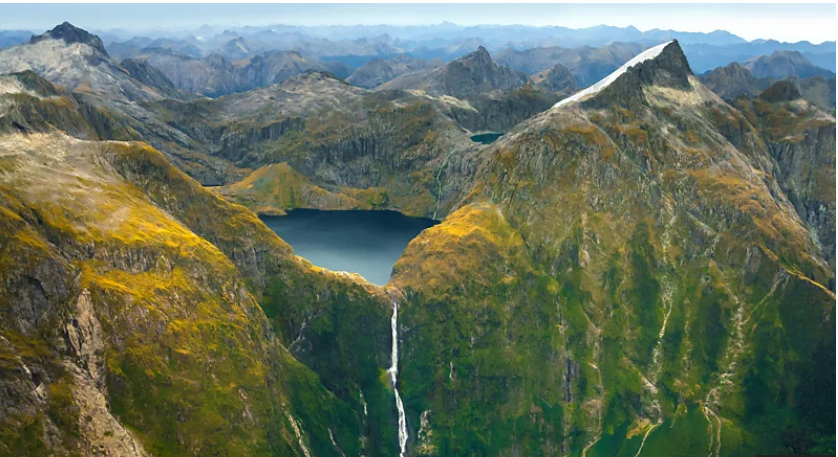 When J.R.R. Tolkien imagined the sweeping landscapes, deep forests, and grand mountains of Middle-earth, he created a world that has captivated readers and viewers for generations. Yet, while the realm of hobbits, elves, and wizards may be fictional, much of its inspiration comes from real-world locations that echo the same beauty, majesty, and timelessness that define Tolkien’s works. From the misty mountains of New Zealand, which brought the world of Middle-earth to life on screen, to the rolling hills of England that Tolkien knew and loved, these landscapes are living reminders of the places that inspired the epic saga of _The Lord of the Rings_ and _The Hobbit_.
When J.R.R. Tolkien imagined the sweeping landscapes, deep forests, and grand mountains of Middle-earth, he created a world that has captivated readers and viewers for generations. Yet, while the realm of hobbits, elves, and wizards may be fictional, much of its inspiration comes from real-world locations that echo the same beauty, majesty, and timelessness that define Tolkien’s works. From the misty mountains of New Zealand, which brought the world of Middle-earth to life on screen, to the rolling hills of England that Tolkien knew and loved, these landscapes are living reminders of the places that inspired the epic saga of _The Lord of the Rings_ and _The Hobbit_.
For fans eager to step into the real-world settings that could pass for Middle-earth, here is a Tolkien-inspired journey that spans continents, drawing from the locations that shaped the fantastical universe we’ve all come to know and love.
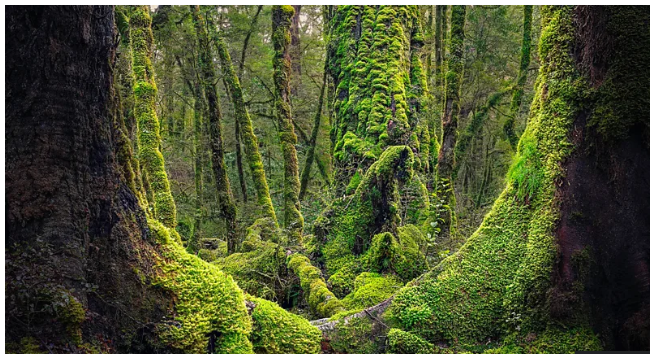 New Zealand: The Cinematic Middle-earth Though Tolkien himself never set foot in New Zealand, director Peter Jackson’s acclaimed film adaptations of _The Lord of the Rings_ and _The Hobbit_ have forever linked the country’s landscapes with Middle-earth. Filming took place across New Zealand’s diverse and breathtaking geography, from towering mountains to lush, rolling plains. The result is a living tribute to Tolkien’s world.
New Zealand: The Cinematic Middle-earth Though Tolkien himself never set foot in New Zealand, director Peter Jackson’s acclaimed film adaptations of _The Lord of the Rings_ and _The Hobbit_ have forever linked the country’s landscapes with Middle-earth. Filming took place across New Zealand’s diverse and breathtaking geography, from towering mountains to lush, rolling plains. The result is a living tribute to Tolkien’s world.
One of the most iconic destinations is Hobbiton, located on the Alexander Farm in Matamata. This fully preserved movie set was the actual filming location for the Shire, home of Bilbo and Frodo Baggins. Visitors can walk among the cozy hobbit holes, stroll through the Green Dragon Inn, and soak in the pastoral beauty of the Shire. It’s as close as one can get to living in the pages of Tolkien’s books.
The volcanic landscapes of Tongariro National Park served as the dark and foreboding land of Mordor. Mount Doom (Mount Ngauruhoe in real life) is visible from miles away, its rugged slopes embodying the menace of Sauron’s stronghold. Adventurous travelers can hike the Tongariro Alpine Crossing and feel like they’re retracing the steps of Frodo and Sam on their perilous journey.
This remote, wild corner of the South Island became the Misty Mountains and Fangorn Forest. With its towering peaks, lush forests, and deep fjords, Fiordland offers an untamed, awe-inspiring landscape. Visitors can take boat cruises through the fjords or hike through the dense woods and imagine themselves in an Elven realm.
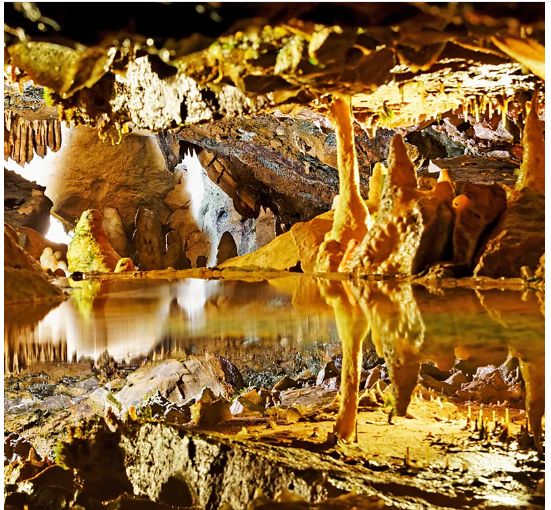 Tolkien’s Inspiration for The Shire Before New Zealand became the cinematic face of Middle-earth, Tolkien’s imagination was deeply rooted in the English countryside. Born in Bloemfontein, South Africa, Tolkien moved to England at a young age and spent much of his life in the pastoral settings of rural England. The lush, green hills and peaceful villages of the West Midlands were a significant influence on his depiction of the Shire.
Tolkien’s Inspiration for The Shire Before New Zealand became the cinematic face of Middle-earth, Tolkien’s imagination was deeply rooted in the English countryside. Born in Bloemfontein, South Africa, Tolkien moved to England at a young age and spent much of his life in the pastoral settings of rural England. The lush, green hills and peaceful villages of the West Midlands were a significant influence on his depiction of the Shire.
Tolkien spent part of his childhood near Sarehole Mill, a historic watermill in the suburbs of Birmingham. This area is believed to have inspired the idyllic setting of the Shire, and visitors can explore the mill and the surrounding countryside to get a sense of what might have influenced Tolkien’s depiction of the hobbit homeland.
The Malvern Hills, with their panoramic views and rolling green slopes, are thought to have influenced Tolkien’s portrayal of Middle-earth’s pastoral landscapes. Tolkien was known to visit these hills, and it’s easy to see how their peaceful beauty could inspire the calm and serene vibe of the Shire.
Though not part of Middle-earth’s landscape, Oxford, where Tolkien lived and worked as a professor, is worth a stop for any Tolkien fan. The Eagle and Child pub, where Tolkien and fellow writers of the Inklings literary group (including C.S. Lewis) met, offers a glimpse into the social life of the author. The Bodleian Library, where some of Tolkien’s manuscripts are housed, is also a must-visit for those wanting to get closer to the mind behind Middle-earth.
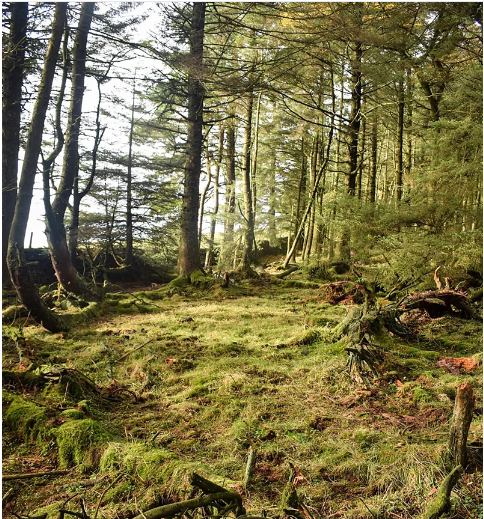
The Swiss Alps: The True Misty Mountains Tolkien’s journey through the Swiss Alps as a young man had a profound effect on his imagination. He once described the trip as “the origin of the hobbit’s journey” in _The Lord of the Rings_. The dramatic mountain ranges, dizzying heights, and deep valleys of Switzerland became the model for Middle-earth’s Misty Mountains.
Nestled in the heart of the Swiss Alps, Lauterbrunnen Valley is often cited as the inspiration for Rivendell, the Elven refuge. With its towering cliffs, cascading waterfalls, and peaceful alpine meadows, the valley mirrors the serene and magical atmosphere of Rivendell. Visitors can explore the valley, hike through its trails, and stand in awe of the same natural beauty that captured Tolkien’s imagination.
These three famous peaks loom over the Bernese Oberland, their jagged profiles resembling the Misty Mountains of Tolkien’s legendarium. Tolkien’s descriptions of the perilous crossing of the Misty Mountains, with their snow-covered slopes and treacherous passes, are believed to be inspired by his own harrowing experience of crossing these mountains.
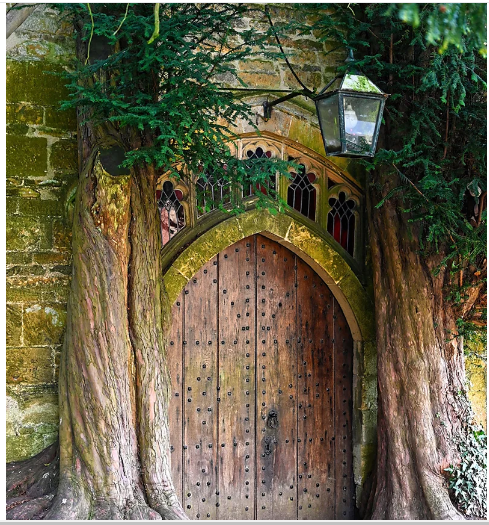 Iceland: A Volcanic Wonderland With its volcanic landscapes, glaciers, and stark, otherworldly scenery, Iceland is a fitting stand-in for several parts of Middle-earth, including Mordor and the desolate lands beyond the Shire.
Iceland: A Volcanic Wonderland With its volcanic landscapes, glaciers, and stark, otherworldly scenery, Iceland is a fitting stand-in for several parts of Middle-earth, including Mordor and the desolate lands beyond the Shire.
Known as the Gateway to Hell in medieval times, Hekla is an active volcano in southern Iceland that could easily be mistaken for Mount Doom. The surrounding lava fields, desolate plains, and frequent eruptions have led to comparisons with the fiery and forbidding landscapes of Mordor.
Thingvellir, with its rugged terrain, tectonic fissures, and dramatic cliffs, is a stunning natural wonder that evokes the wilderness of Middle-earth. The park is not only of geographical interest but also of historical importance, as it was the site of Iceland’s ancient parliament, adding an extra layer of depth to the connection with Tolkien’s world.
Ireland, with its lush green landscapes, ancient forests, and mystical atmosphere, seems like the perfect real-life parallel to the Elven lands of Lothlórien and Rivendell. Though Tolkien never explicitly stated that Ireland influenced his works, the country’s deep mythology and stunning natural beauty evoke the magic and mystery of Middle-earth.
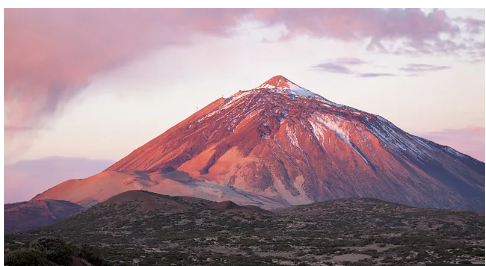 Known as the Garden of Ireland, County Wicklow is home to rolling hills, dense forests, and sparkling rivers that feel like they were lifted straight from Tolkien’s pages. Glendalough, a monastic site nestled in a valley surrounded by mountains and lakes, feels like an Elven sanctuary, exuding a sense of timeless peace and beauty.
Known as the Garden of Ireland, County Wicklow is home to rolling hills, dense forests, and sparkling rivers that feel like they were lifted straight from Tolkien’s pages. Glendalough, a monastic site nestled in a valley surrounded by mountains and lakes, feels like an Elven sanctuary, exuding a sense of timeless peace and beauty.
This unique landscape, with its vast limestone plateaus, caves, and ancient dolmens, evokes the sense of an otherworldly place, perhaps even an ancient Dwarven kingdom. The Burren’s mystical atmosphere and rugged terrain are reminiscent of Middle-earth’s more mystical locations, where history and myth intertwine.
For fans of Tolkien’s works, exploring these real-world locations offers more than just a vacation—it’s an immersive experience into the heart of Middle-earth. Whether wandering through the serene hills of the English countryside, hiking the volcanic landscapes of New Zealand, or standing in awe of Switzerland’s towering peaks, travelers can find echoes of Tolkien’s imagined world everywhere. The timelessness of these landscapes allows visitors to step into the magic and wonder of Middle-earth, blurring the lines between fantasy and reality. So, pack your bags, lace up your boots, and set off on a journey that would make even a hobbit proud.
Ennywealth


